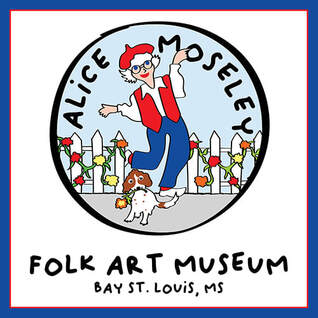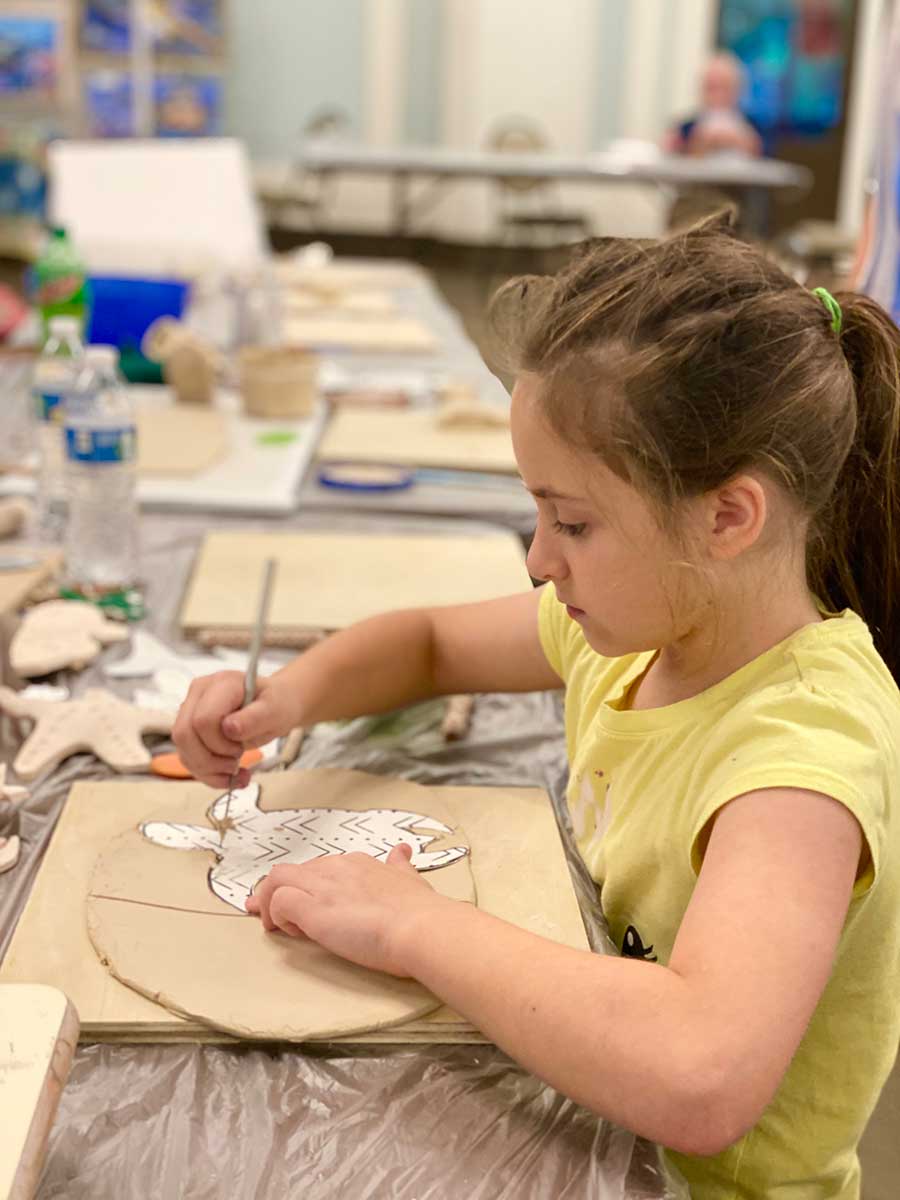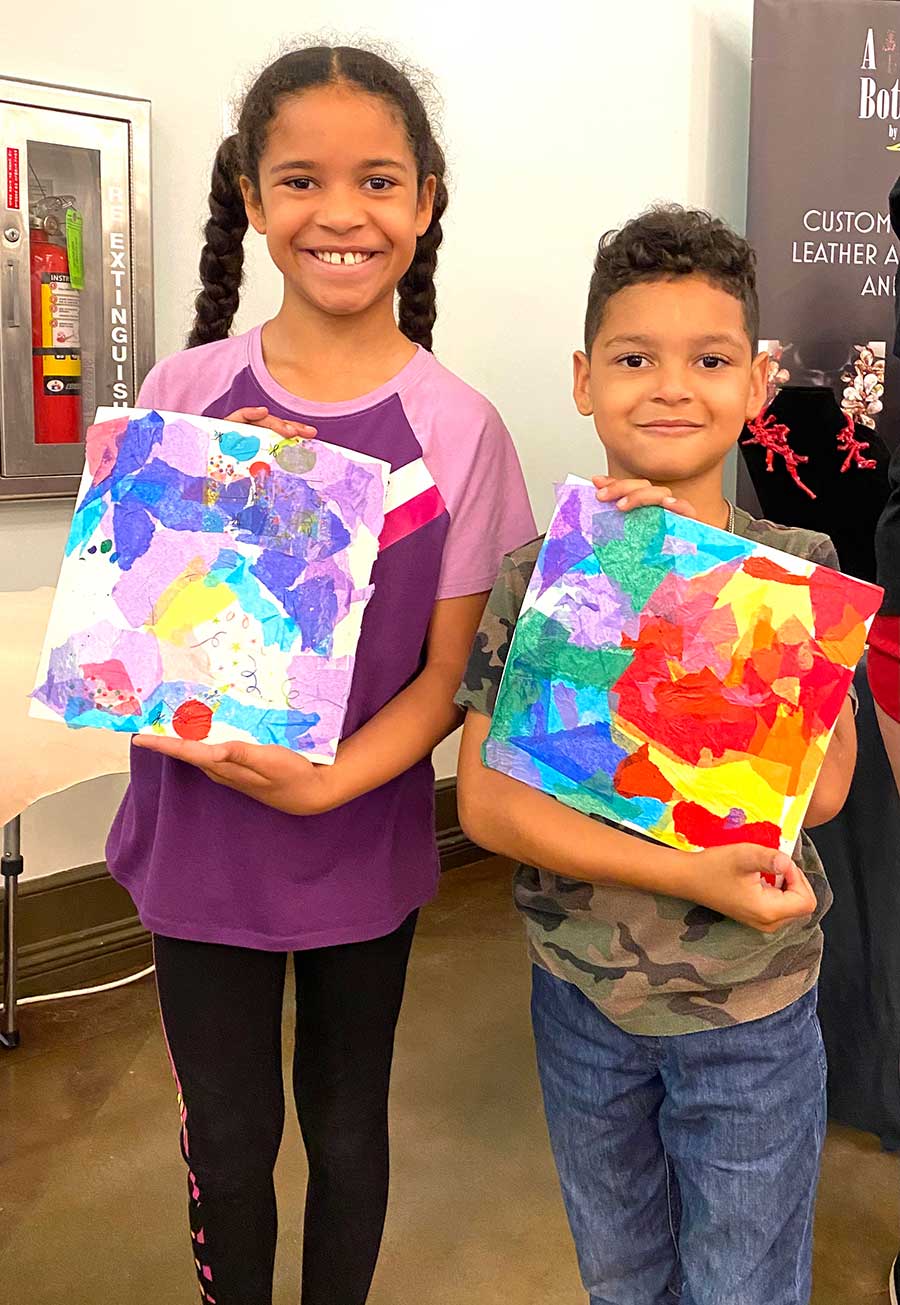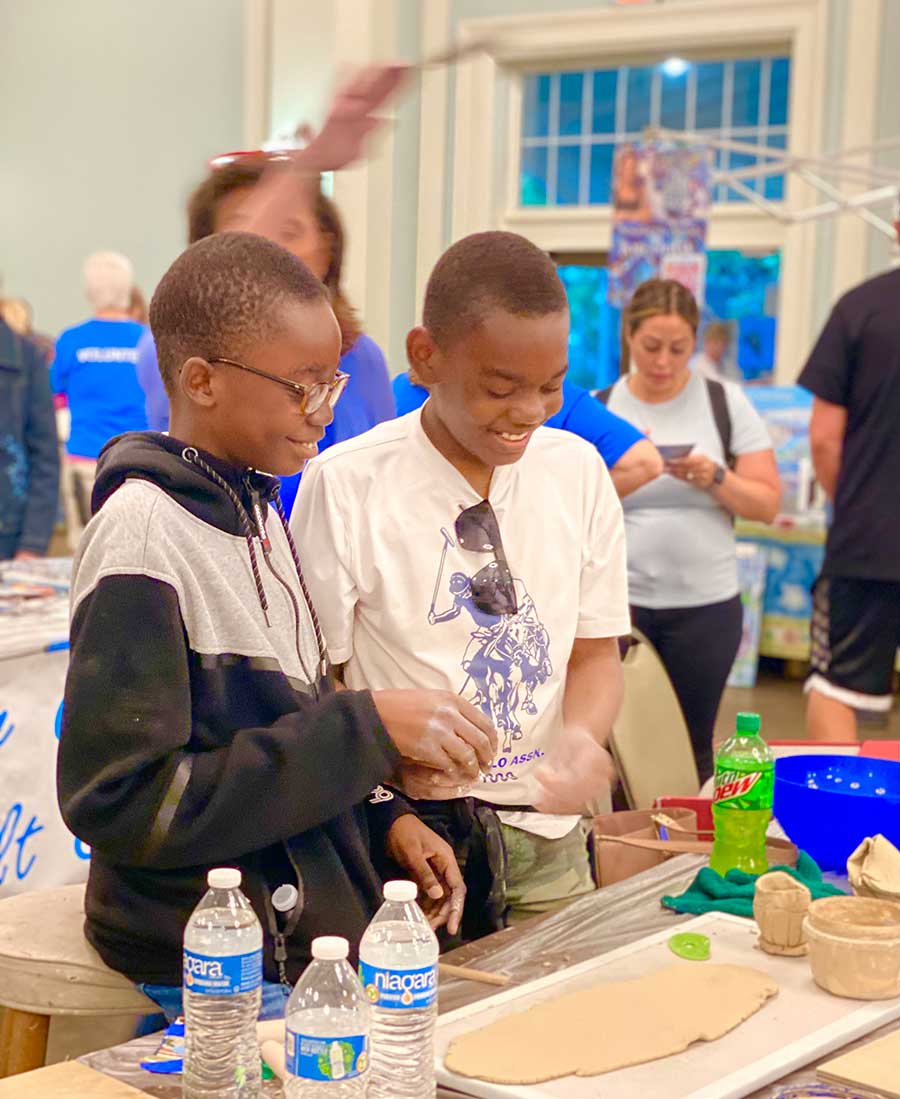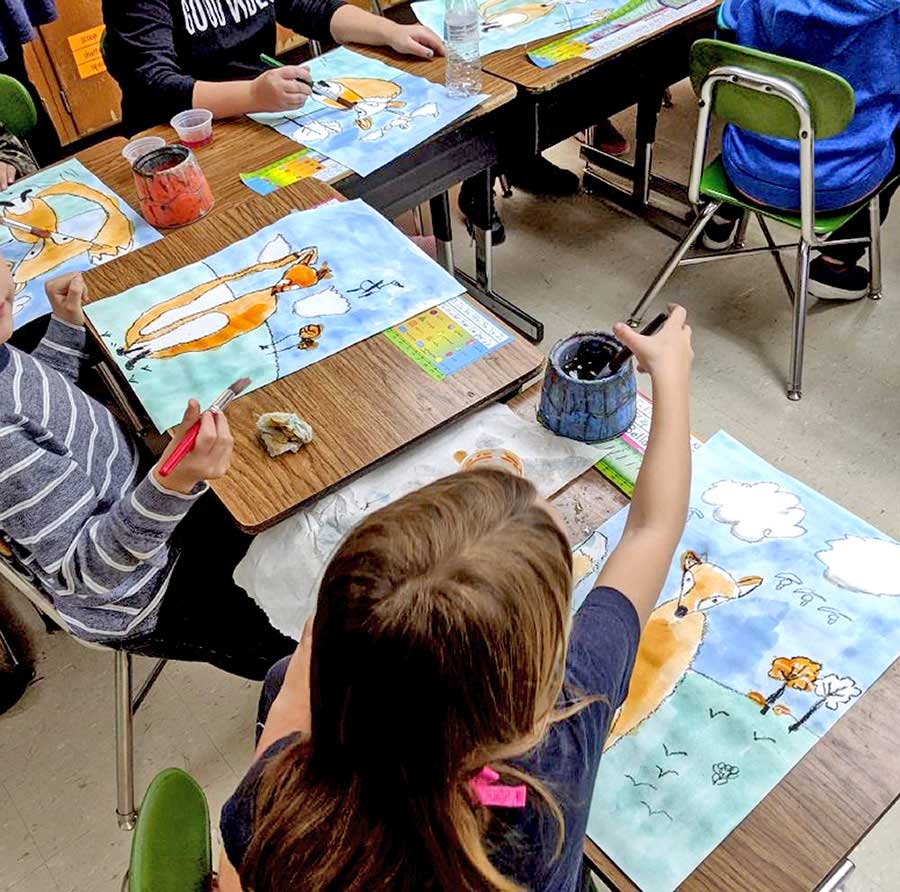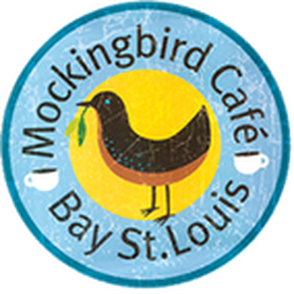This is the final part of the series discussing the importance and impacts of educating the community’s youth in the arts.
– By Connie Voight
Arts Locale is supported by
When we say “the arts,” we most likely refer to music, theatre, and visual arts. However, that limits our view. Video games, computer-generated imagery, architecture, movie production, engineering, cartoons, sound technology, woodworking, even the colors Ford paints their trucks and the patterns on your sheets are all a conglomeration of the arts. The more humans are exposed to the arts, the broader they think and the more capable they are of combining the skills used in an art classroom with skills learned in Science, Math, and English. After all, you can’t design a book cover unless someone writes the book, and you can’t make a quilt unless you know your math! Even an adverse event or a simple conversation regarding the arts can challenge a student to try something new – maybe something they’ve never tried before. Take John Dumoulin, for example; his first memory of participating in the visual arts was not good. “My high school art teacher decided my work just didn’t ‘cut the mustard’ and refused to enter any of it in the annual student art show,” he recalled. Harsh and soul-crushing to young ears! If only that art teacher could take a trip to the Bay, she would see his art hanging in a variety of places, read his writings in The Shoofly, and maybe pick up a copy of his latest book.
Dumoulin’s mother, on the other hand, encouraged him to try the arts, “Not because I displayed any genius talent, but because she thought I had a better chance of doing something with a liberal arts degree than anything associated with my poor math and science skills,” said Domoulin. John and Rosie’s children were influenced by their parents’ love of the arts. Their kids participated in theatre, art, and music in high school. Their daughter is a former television producer turned artist with a very successful business. Their son is a musician, author, and website designer. Their grandchildren, still in grades K-8, love music, visual arts, and theatre, and they participate in their school art programs in Texas and Kansas. The path to the arts is different for every person. Some are exposed to the arts at an early age, some much later. Sometimes youngsters are exposed to art – even submersed in art – from the time they’re born. Such is the case with many of the artists in this article. From a young age, David Howard Thornton participated in his community’s many theatrical offerings. He learned from the best in Huntsville, Alabama, and from the film greats. There’s not an old movie that David hasn’t seen and studied. After graduating high school, David decided to follow in his mother’s footsteps and study elementary education. From a young age, David Howard Thornton participated in his community’s many theatrical offerings. He learned from the best in Huntsville, Alabama, and from the film greats. There’s not an old movie that David hasn’t seen and studied. After graduating high school, David decided to follow in his mother’s footsteps and study elementary education. Before graduating, David’s mother and grandmother passed away, his good friend committed suicide, and his dog died. “It was not a happy time,” recalled David. “One day, my students and I had just finished story time when I announced it was time ‘to get on to math.’” The kids just groaned. That day, Thornton realized that what he loved most about teaching was entertaining his students. “I also remembered something my mom told me: Don’t do what you think you should do, but what you want to do.” Thornton switched gears, moved to New York City, took classes in voice acting, waited tables, and did a few movies and cartoons. He did five years with the Broadway tour of How the Grinch Stole Christmas, playing the Grinch and Grandpa. He left the tour when he landed the role of Art the Clown in the Terrifier movies. If you enjoyed the first two, David urges you to keep your eyes open for the third. It took twelve years, but David can now say that he’s a movie star! Kim Parker, Calhoun Community College (Alabama) Fine Arts department chair, grew up with parents that created wooden crafts for a local shop. As a child, she often helped them. She was painting one day and “used two colors to paint the fence posts, and the colors blended and looked like wood.” Parker’s dad made a big deal about her skills. “After that, I wanted to make any kind of art because it impressed my dad.” Although her artistic path had early roots, Parker says choosing the arts as a career was an accident. In high school, her guidance counselor suggested she pursue engineering and told her, “You’re Oriental, so you’ll be good at math.” “I wasn’t old enough or experienced enough to know everything that was wrong with that sentence,” says Parker, “but I went into engineering and realized right away that those were not my people. I came home to regroup, took a theatre class for fun, and LOVED it.” She ended up a theatre major with a graphics scholarship. “I was born into a family of thespians,” said 26-year-old Peter, whose parents live in Bay St. Louis, “I have distinct memories of watching my family perform onstage. I was drawn in and appeared in a couple of plays when I was young.” When he was six, he signed up for football, going in an entirely different direction than the rest of his family. He was fairly successful at avoiding theatre until he was a sophomore in high school when his good friend was drafted into the school musical and convinced Peter to join the cast. It was that experience, and the memory of seeing his older brother excel at theatre, that pulled him back. “After all,” he stated, “It was my duty to try and one-up him, even if he was nine years older!”
In his junior year, Peter took a leap of faith and tried out for his first show. “Although I had forgone acting for football, I loved both with an intense, burning passion but was too scared of what my friends might think; a preposterous thought in hindsight.” Cast as Charlie Brown, Peter said he was “overwhelmed at many turns, but my competitive nature had a tendency of pushing me forward. All the apprehension I felt vanished on stage.” Today, Peter is a corporate copywriter for a large firm in Cleveland, Ohio. Like his older brother, he credits his time in theatre (and football) for giving him the courage and ability to work well in a team. What about Peter’s older brother? Josh was in his first play at three and a half. In second grade, he was cast in Disney’s Tom and Huck and didn’t stop until he took his final bow after the last show in his senior year of high school. After graduating with a degree in Broadcast Communications, Josh went to work for a local ABC affiliate. When asked what impact his art experiences had on his career, Josh replied, “Not only did my theatre experiences make me comfortable speaking with, and to, large groups of people, it taught me how to successfully work with a team to accomplish things as a group.” Now an executive news producer in Atlanta, Josh finds it “easy to make bold decisions which, in turn, has made me a more confident leader.” He does admit his training and experience failed him when he won his first Emmy Award. “I was truly speechless, maybe for the first time in my life!” Exploring the value and effects of an arts education is a little like pursuing Alice down the rabbit hole. There are many stories from teachers, students, parents, and even neighbors that corroborate the scientific findings of the last three decades and confirm the value of an arts education, regardless of a person’s final field of endeavor. Whether these students became famous is immaterial. Every person interviewed for this article was positively impacted in some way by the arts education they received. In turn, those students impacted the lives of others. This author is old enough to know that the youngest of those surveyed are now impacting the lives of others. Few things are as powerful as seeing a student bloom in an art class. Even more powerful is learning the stories of those impacted by a student’s own artistic experiences. As textile designer William Morris once said, “I do not want art for a few any more than education for a few, or freedom for a few.” Enjoy this feature?Comments are closed.
|
Archives
February 2024
Categories
All
|
Shoofly Magazine Partners
Our Shoofly Partners are local businesses and organizations who share our mission to enrich community life in Bay St. Louis, Waveland, Diamondhead and Pass Christian. These are limited in number to maximize visibility. Email us now to become a Shoofly Partner!


